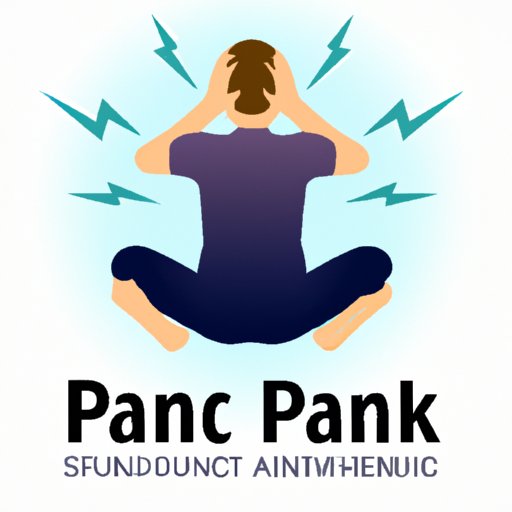
Introduction
Panic attacks can be incredibly scary and debilitating for those who experience them. When in the throes of a high panic attack, it can feel like everything is out of control and there’s no way to stop the panic. However, there are practical techniques that can help reduce anxiety levels and help you come down from a high panic attack. The purpose of this article is to provide readers with these techniques so they can better manage their anxiety in the moment.
Focus on Breathing
One of the most effective ways to come down from a high panic attack is to focus on your breathing. Take slow, deep breaths and try to focus all your attention on your breath. This helps bring your mind back to the present moment and away from the anxiety-provoking thoughts.
Here’s how you can practice deep breathing:
- Sit down in a comfortable position with your back straight.
- Take a slow, deep breath in through your nose for a count of 4.
- Hold your breath for a count of 7.
- Exhale slowly through your mouth for a count of 8.
- Repeat steps 2-4 for at least a minute or until you feel more calm and centered.
Body Scan
A body scan is a mindfulness technique that involves mentally scanning your body from your feet up to the top of your head. This helps bring awareness to areas of tension and release that tension through relaxation.
Here’s how you can perform a body scan:
- Start at your feet and focus all your attention on that area. Imagine each muscle and bone in your foot relaxing and releasing tension with each exhale.
- Move up to your ankles and repeat the process of visualizing release of tension.
- Keep working your way up your body, paying close attention to each body part and how it feels. When you reach a tense area, take a few extra breaths and focus all your attention on releasing that tension as you exhale.
- Eventually, you should reach the top of your head, feeling more relaxed and centered than you did before the body scan.
Mindful Meditation
Mindfulness meditation involves focusing your attention on the present moment without judgment. This helps build awareness of your thoughts and feelings and reduces reactivity to those thoughts and feelings.
Here’s how you can practice mindfulness meditation:
- Sit down in a comfortable position with your back straight.
- Close your eyes and focus on your breath. Notice the sensation of your breath as it flows in and out of your body.
- If your mind starts to wander, gently bring your attention back to your breath. Remember that it’s normal for the mind to wander, so don’t judge yourself for it.
- Expand your awareness to your whole body. Notice any sensations or feelings that come up without judgment.
- If you notice any anxious thoughts or feelings, acknowledge them without judgment and gently bring your attention back to your breath or body.
Grounding Techniques
Grounding techniques help bring you back to the present moment by engaging your senses. By paying close attention to your surroundings, you can help reduce anxiety levels.
Here are some grounding techniques you can try:
- Look around and name 3 things you can see, 3 things you can hear, and 3 things you can touch.
- Focus on the sensation of your feet on the ground. Pay close attention to every detail of the sensation.
- Touch something with an interesting texture, like a rock or a piece of fabric. Focus on the sensation of touch and how it feels.
Progressive Muscle Relaxation (PMR)
Progressive muscle relaxation involves tensing and then relaxing each muscle group in your body. This helps release tension and promote relaxation.
Here’s how you can practice PMR:
- Tense each muscle group in your body for a few seconds, starting with your toes and moving up your body.
- Release the tension and relax the muscle.
- Take time with each muscle group and don’t rush through the exercise. Focus all your attention on the sensation of relaxation.
Self-talk
Positive self-talk can help reframe negative thoughts and promote a more positive mindset. By choosing positive phrases to repeat, you can help reduce anxiety levels and promote a sense of calm.
Here are some positive phrases you can use:
- “I am safe.”
- “I have control over my thoughts.”
- “I can handle this.”
Motion
Physical activity can help release tension and promote relaxation. Engaging in light exercise or movement can help reduce anxiety levels and promote a sense of calm.
Here are some activities you can try:
- Take a walk around your neighborhood or in a nearby park.
- Practice gentle stretching or yoga.
- Engage in light sports like basketball or volleyball.
Conclusion
Coming down from a high panic attack can feel impossible, but by practicing these practical techniques, you can better manage your anxiety and promote a sense of calm. Remember to try out different techniques and see what works best for you. If you need additional support, don’t hesitate to reach out to a mental health professional.
Additional Resources:




